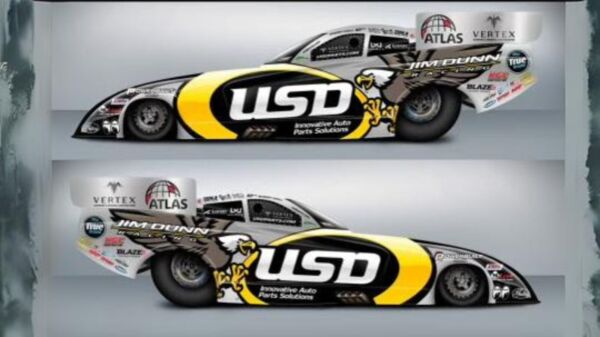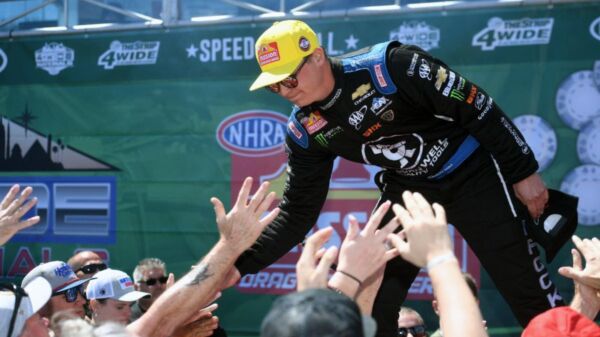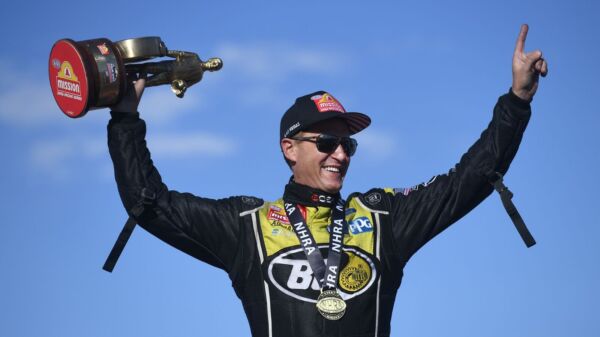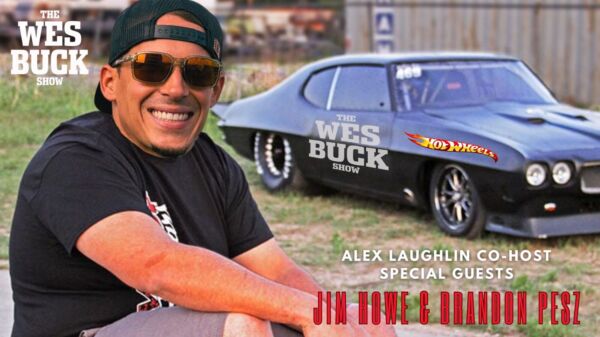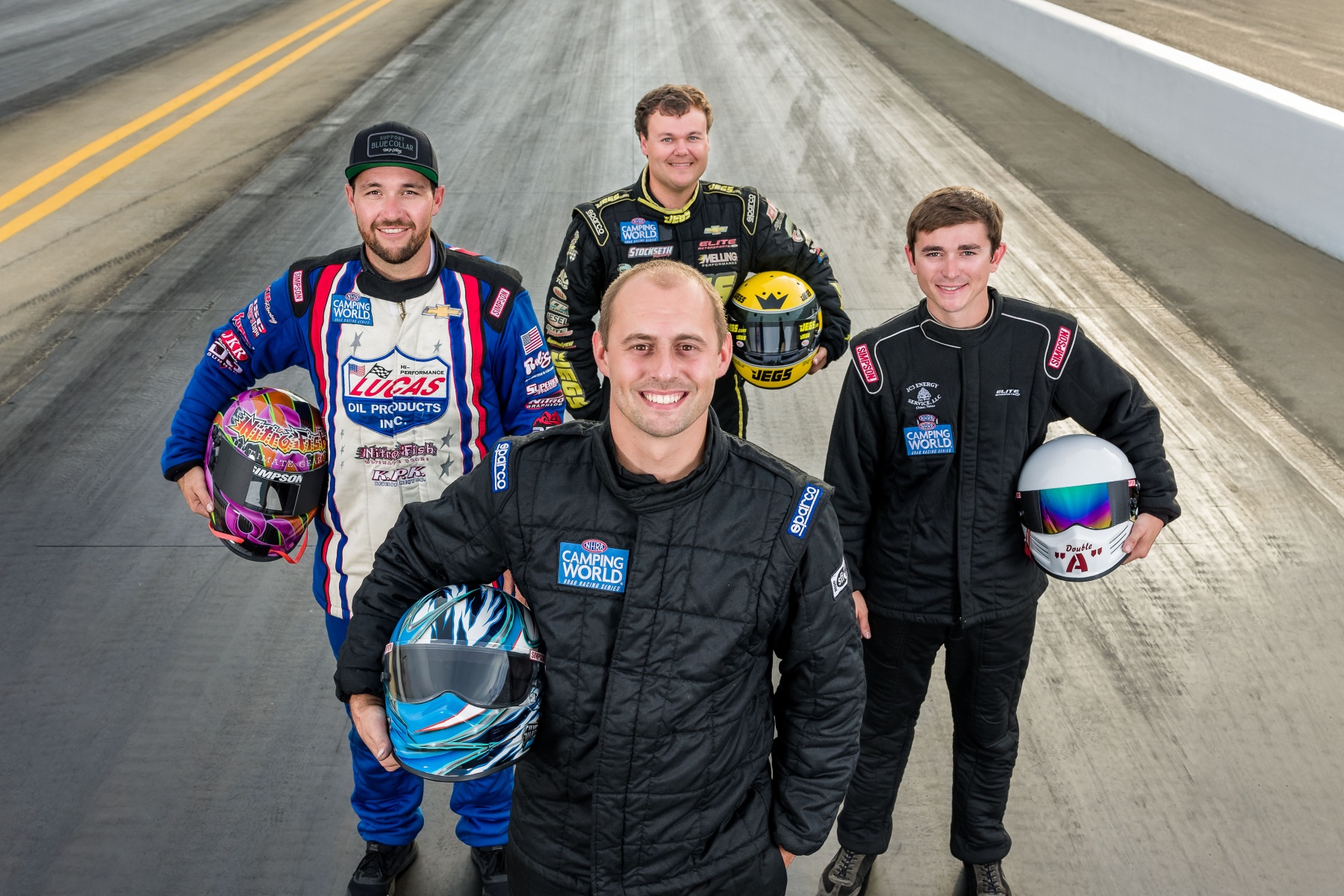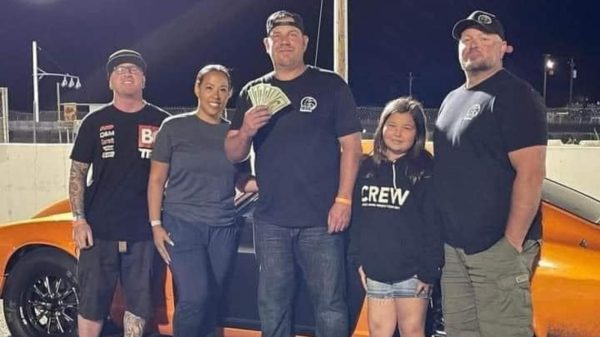In the not-so-distant past, NHRA Pro Stock was viewed as a dying class. It was an oddity to see a full 16-car field, and it was obvious who would be walking away with the Wally at the end of the weekend.
But over the last couple years, the class has seen a complete reversal. Pro Stock has been the consistently strongest class in the NHRA Camping World Series with an average of 18 cars at the 17 races the class was contested and a high of 21 cars at the season-opening Gatornationals in Gainesville, Florida. The competition level is also compelling, as multiple drivers from multiple mega-teams have been successful on race day, culminating with a thrilling championship battle going down to the final race of the season.
[Editor’s Note: This story originally appeared in DI #172, the 30 Under 30 Issue, in November of 2021.]
The top two in points going into the NHRA Finals were Greg Anderson and Erica Enders, who were both pursuing their fifth world championship. But right behind the two Pro Stock heroes were four “young guns” eager to make their mark in the factory hot rod class.
Dallas Glenn, 30, has been an assassin on the starting line in his RAD Torque Systems Chevy Camaro out of the KB Racing camp. Glenn has served as a crew member for KB Racing for nearly 10 years, primarily working with the recently retired Jason Line, who won three Pro Stock world championships before stepping away from driving last year. Line’s vacant seat – and backing from supporters like RAD Torque and Silver State Plumbing – gave Glenn his chance to move into the driver’s seat. He’s capitalized on the opportunity, winning three races to lead the Rookie of the Year conversation.
Glenn’s KB Racing teammate, Kyle Koretsky, 32, also scored his first win this season in his Lucas Oil/Nitro Fish/KPK Development Camaro. Koretsky’s win at the Carolina Nationals was especially meaningful, as his father, Kenny “Captain Chaos” Koretsky, raced in Pro Stock for years without picking up a Wally. The second-generation driver made his debut in 2020 and ran a partial schedule before running the full tour this season.
When five-time Pro Stock world champion Jeg Coughlin Jr. stepped away from driving at the end of last season, his nephew, Troy Coughlin Jr., was prepared to take his place as the driver of the iconic JEGS.com Camaro. TJ, 31, raced alongside Jeg during a successful, part-time rookie campaign in 2020 before taking the reins of the Elite Motorsports-fielded primary JEGS entry this year. He’s the third Coughlin generation to compete in Pro Stock, as his father is a three-time Pro Stock winner, and his grandfather, Jeg Sr., briefly raced in the class in the early ‘70s.
 Ironically, the youngest of this quad, Aaron Stanfield, is the veteran of the group. Now 26, Stanfield made his Pro Stock in 2014 when he was just 19. He started out driving his family’s Camaro formerly driven by his father, three-time Pro Stock winner Greg Stanfield, but he’s spent the last few seasons driving an Elite Motorsports entry with backing from Janac Brothers Racing and JC3 Energy. Three of Stanfield’s four wins in the class came this season, along with a second consecutive Factory Stock Showdown world championship.
Ironically, the youngest of this quad, Aaron Stanfield, is the veteran of the group. Now 26, Stanfield made his Pro Stock in 2014 when he was just 19. He started out driving his family’s Camaro formerly driven by his father, three-time Pro Stock winner Greg Stanfield, but he’s spent the last few seasons driving an Elite Motorsports entry with backing from Janac Brothers Racing and JC3 Energy. Three of Stanfield’s four wins in the class came this season, along with a second consecutive Factory Stock Showdown world championship.
This new generation of Pro Stock drivers also includes 19-year-old Mason McGaha, 22-year-old Cristian Cuadra, and 25-year-old Fernando Cuadra Jr. Vincent Nobile, 30, who was a standout in the class before a brief hiatus, returned this season for a handful of races with Elite Motorsports and managed a final-round appearance at Atlanta.
This resurgence of fresh, young talent in the class isn’t exactly a mistake. As most of these drivers will explain, a collective effort by the biggest power players in Pro Stock has made the class more attainable, and consequently, more appealing in recent years. That accessibility lined up with a deep pool of talented young drivers in the sportsman ranks, many of them with a burning desire to move up to Pro Stock.
To get a better look at this next generation of Pro Stock and the environment that has empowered them to succeed, we sat down with Coughlin, Koretsky, Glenn, and Stanfield for a roundtable interview.
How long have you known you wanted to one day race Pro Stock?
TJ COUGHLIN: Probably since around 1996 (laughs). My dad started in ’94, but earliest I can remember, that’s just what I was around. That’s what I saw. It’s what I learned to really love, everything from the sights and sounds and smells, pretty much all five of your senses. It makes your hair stand up. I’ve always been romantic about Pro Stock drag racing. I’ve always loved it. My dad did it, and his dad even ran for a little bit. Pappy had a couple years [in Pro Stock] in the early ’70s. Watching Jeg was always really cool. It was always inspiring to watch him race in the class and do really well.
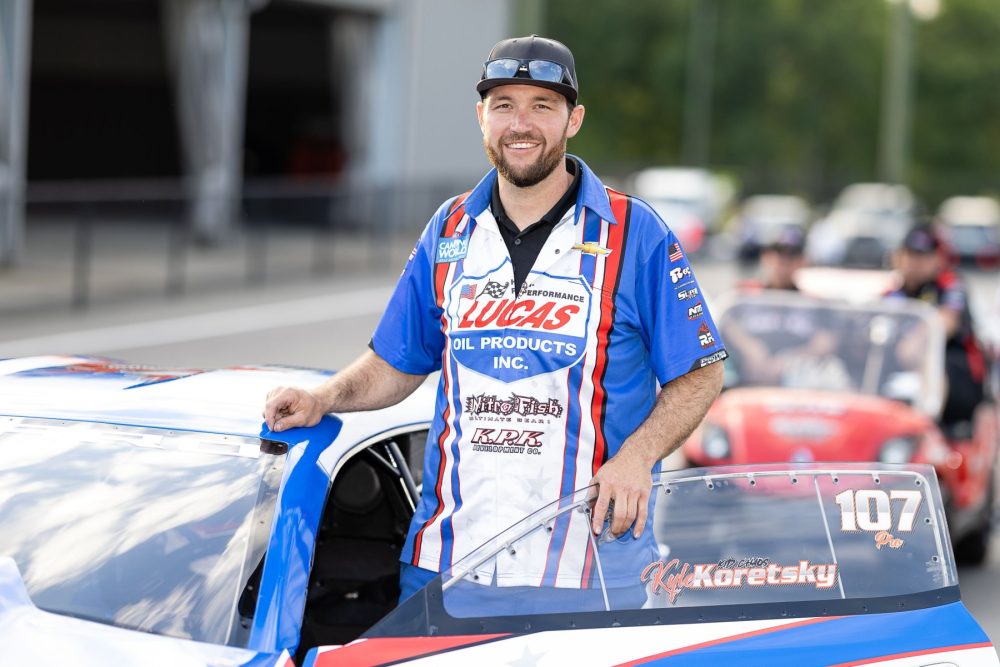 KYLE KORETSKY: I feel like I’ve known I wanted to race Pro Stock as far back as I can remember, but probably right around 14 when I was racing Jrs. You have to go through the steps and the Jr. Dragster is the first step I was allowed to race. So I said I think that’s where we need to start, then we’ll go from there. Then one day Pro Stock was the end goal. I wanted to be like my dad.
KYLE KORETSKY: I feel like I’ve known I wanted to race Pro Stock as far back as I can remember, but probably right around 14 when I was racing Jrs. You have to go through the steps and the Jr. Dragster is the first step I was allowed to race. So I said I think that’s where we need to start, then we’ll go from there. Then one day Pro Stock was the end goal. I wanted to be like my dad.
DALLAS GLENN: I knew a long time ago, before I even started working at KB Racing. That was actually even before I started racing at all. When the nationals came into town, I absolutely loved everything about Pro Stock. A good friend of mine that lived in Washington, Adam Drzayich, went to work for Warren Johnson, and I just always looked up to him because he was a younger kid who would go out racing, take the big rig out, and he had a cool job with Warren Johnson working on a Pro Stock car. I loved everything about it.
When I started working at an engine machine shop building bracket engines, that just fueled the fire even more for Pro Stock. Moving into Stock Eliminator, it’s kind of like a mini Pro Stock, trying to get horsepower out of a certain combination. That’s kind of where Pro Stock starts.
But yeah, I just absolutely love everything about Pro Stock, how close it is to on the edge of everything. It’s right at the cutting edge. A lot of stuff is developed there that trickles down to bracket cars.
AARON STANFIELD: I knew it from being a fairly young kid, just sitting up on the wall watching my dad make laps in the car. It was always something I’ve wanted to do as far back as I can remember.
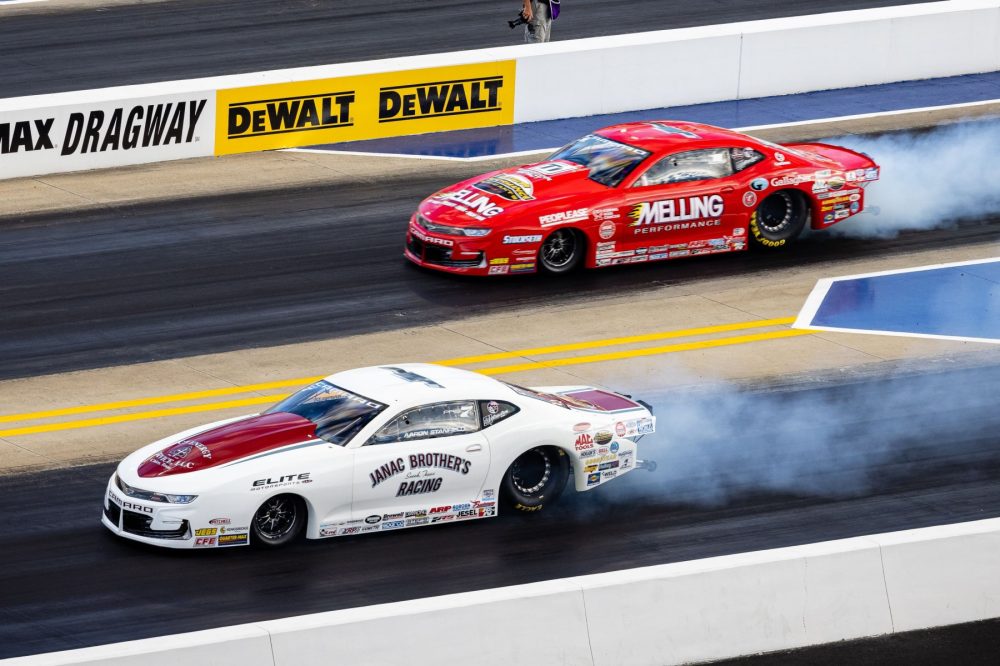
What is it about the class that appeals to you as a driver?

Troy Coughlin Jr. and sister Paige
COUGHLIN: Just the strive for perfection and making good runs. You have to pretty much be on kill in these cars. It’s so hard to be consistently good all the time in these cars. I just think the challenge of it is really extreme. Just the fact that you can make a perfect run. You can crush your shifts and crush the tree and make an absolutely perfect run. That’s very rewarding. That’s the gist of it, chasing that perfection. It’s almost like bracket racing but you don’t have to worry about the finish line. You have to be really good. You have to be sharp. It’s really about consistency. To me, I think consistency really is the biggest factor in driving a Pro Stock car.
KORETSKY: The challenges are what appeal to me. It’s important to let that clutch foot go on time, hit the shift points on time, keep it in the groove at all times, and have the crew behind you to give you the proper equipment. Without a good team, you really can’t be competitive, in my opinion.
GLENN: As a driver, I look at a lot of the other classes, bracket racing especially, where you have to have good equipment, but even a really good driver can take marginal equipment and take it to a final round. In Pro Stock, it is one of the most driver-demanding classes there is. You can take a good car and one little thing can ruin a run and that just ruins your chances of moving on to the next round. You have to be perfect in every aspect, as well as the setup has to be good as well.
As far as driving, I think it’s the most fun to drive. You’re doing so much in the car: shifting four times and driving one-handed and hitting ‘chutes and getting all the switches turned off and letting go of the clutch. You’re doing so much. I’ve said it before, it’s the most fun car I’ve ever driven.
STANFIELD: As a driver, if you look at the all-around package, it’s the pinnacle of performance. You’re trying to get every inch of horsepower out of a 500-cubic-inch engine and trying to use that power the best you can. From a driving aspect, it’s just the challenge of chasing that perfection that it takes to be competitive.
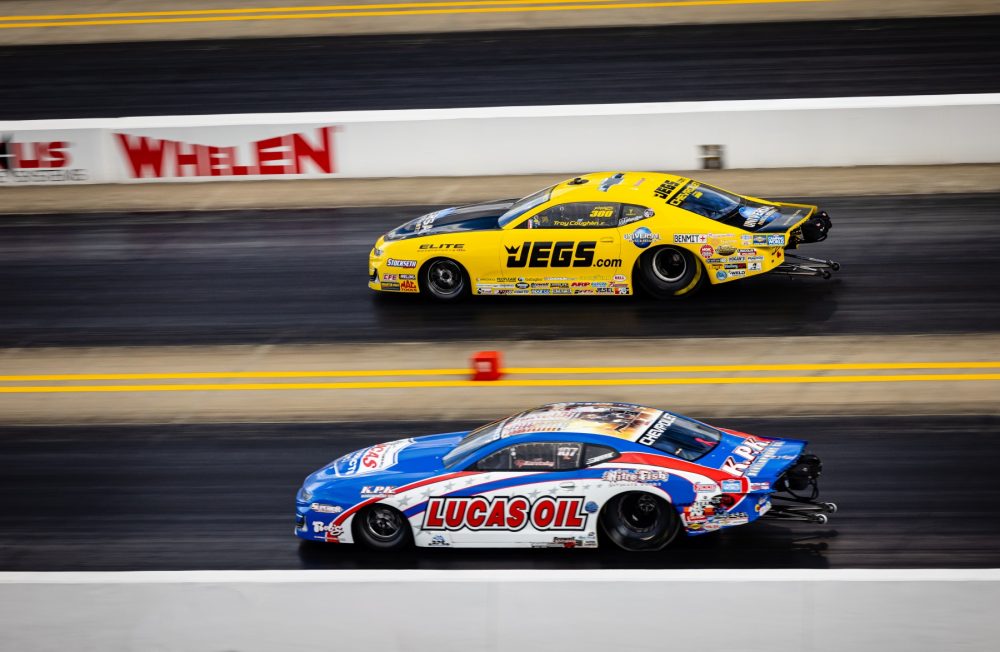
What’s changed over the last five or so years that’s made it more attainable for younger drivers to step in and race competitively right out of the gate? What’s made it more appealing?
COUGHLIN: I think NHRA does a nice job of making the class fun. The coverage on the TV show, it might not be as long as we’d like it to be, but I think that’s made it appealing. Just look at the youth in the class. That’s the coolest thing. And the youth that has come to the class is extremely talented. Look at Dallas. He’s unreal. He’s driving really well and winning races. Same thing with Aaron. He can obviously drive and makes good runs. Again, same thing with Kyle. He’s got a win already. Gosh, the young talent in the class, how could you not want to watch? It makes it fun and makes it entertaining.
KORETSKY: I think a lot of these teams, the main teams being Elite and KB Racing, they found the power, they’re able to keep the power together and run the motors longer than you could before.
They broadened their horizons on the rental programs to try to generate more income. At the end of the day, this is a business. Everyone wants to make money. We all want to have fun, but it’s a funding-generated sport, and without the funding you can’t really do it. I think when times got a little tougher and sponsors were pulling back, there had to be other avenues of revenue. As a business person myself, that’s kind of how I see it, more of a business decision.
They’ve been saying Pro Stock in NHRA is dying for years, but NHRA Pro Stock is the strongest class right now in all four professional categories. And I think it’s the most competitive. The fields are tight. The younger generation is coming up.
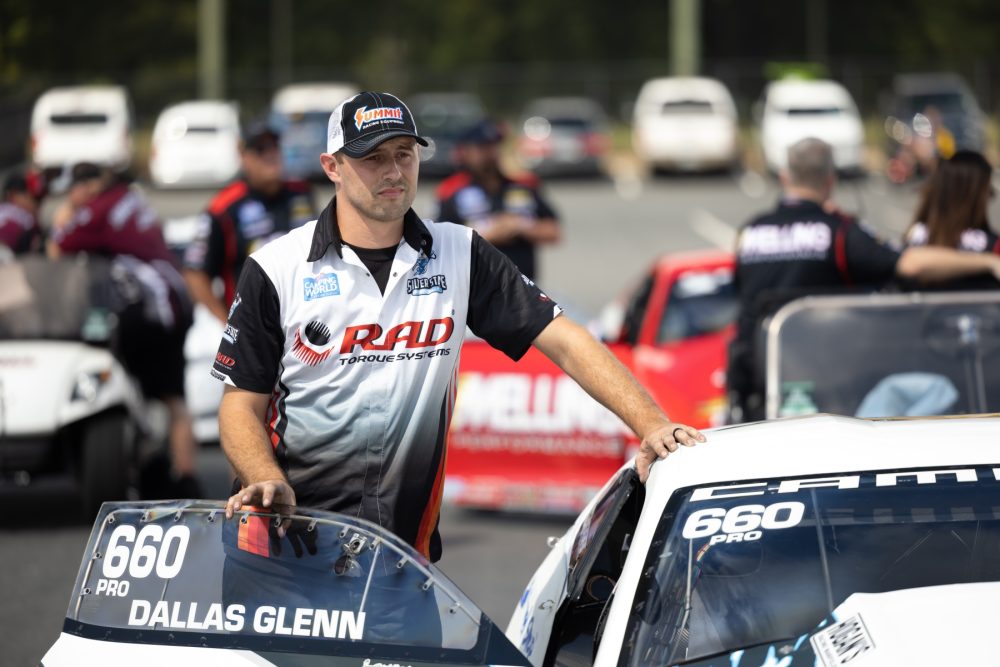 GLENN: I think that was kind of a group effort between all the owners. For one, just trying to make it somewhat more affordable with the rental programs, whether a guy has a car and just needs engines or he shows up with a helmet and drives. Being able to have rental programs where all you have to do is show up with your driving stuff, that I think is one of the biggest changes.
GLENN: I think that was kind of a group effort between all the owners. For one, just trying to make it somewhat more affordable with the rental programs, whether a guy has a car and just needs engines or he shows up with a helmet and drives. Being able to have rental programs where all you have to do is show up with your driving stuff, that I think is one of the biggest changes.
I know there were some teams that really liked the 18 races because it definitely cuts down on the financial burden. It wasn’t necessarily the greatest thing for us because of the way our sponsorship was laid out. It was per race, so if there’s less races, it’s less money. But it does give us more down time between certain races so we get to work on our stuff a little more.
But I think one of the best things was all the owners getting together and trying to make it more affordable.
STANFIELD: Well, whenever I was a kid watching it, there were a lot of different programs, a lot of different engine builders. For the most part, I remember guys like my dad, Greg Anderson, and Bob Glidden, they built their programs with their own two hands. Just being able to have the opportunity to start out at a high level has probably made it very appealing. I would say the cost of it is the best it’s been in a long time. It’s not an easy opportunity, but a more obtainable one.

For years, Pro Stock was seen as like the good old boys’ club. It was a lot of older drivers and crew chiefs. Do you feel like drivers such as yourselves have changed that image of the class?
COUGHLIN: It’s definitely added a new branch, at least. I don’t know if it’s the same good old boys class, but I think it adds a lot of entertainment value to it. It creates a story. We’re all different. I think that’s brought it to an exciting forefront.
KORETSKY: Oh yeah. And I’m not that young. I’m 32 and I feel old compared to guys like Mason McGaha. But I think with the younger faces coming in, it’s bringing a little more excitement and it’s bringing everyone’s A-game out. The .040, .050, .060 reaction times don’t really win races anymore. That stinks to say because I’ve been on the bad side of it. I’ve been .040 and lost, whereas 5-6 years ago that would win with the power I have. But everyone is so tight and everyone’s stepped up their game and everyone has fire in their eyes to beat each other. I think it’s great.
GLENN: Yeah, the more young people that get into it, the healthier it’s going to be. If you go look at it and 75 percent of the people in the class are 55 or older, you wonder how much longer is everyone going to do this. But when you look at the class and the average age is like 30, it shows some longevity. There’s a lot of drivers who are just now beginning to enter their prime. There’s going to be a lot of years ahead as long as everything else in the class can be sustained.
Who knows what the future holds. I know there are a lot of good drivers who are having a lot of fun driving right now and want to continue driving. As far as a young, healthy class, I think this is the pinnacle and a prime example of what other classes can look to.
STANFIELD: Sure, and I think that’s important to drag racing’s longevity, to continue to inject youth into it, even in the fuel ranks as well as Pro Stock. I think Pro Stock’s done a good job. There are a lot of people like myself – Dallas, TJ, Mason – that don’t have the money to go out and compete ourselves, but people have given us the opportunity to hop in the car. I think it’s good whenever people that don’t necessarily have the money but are talented like Dallas and myself have the chance to run a car.
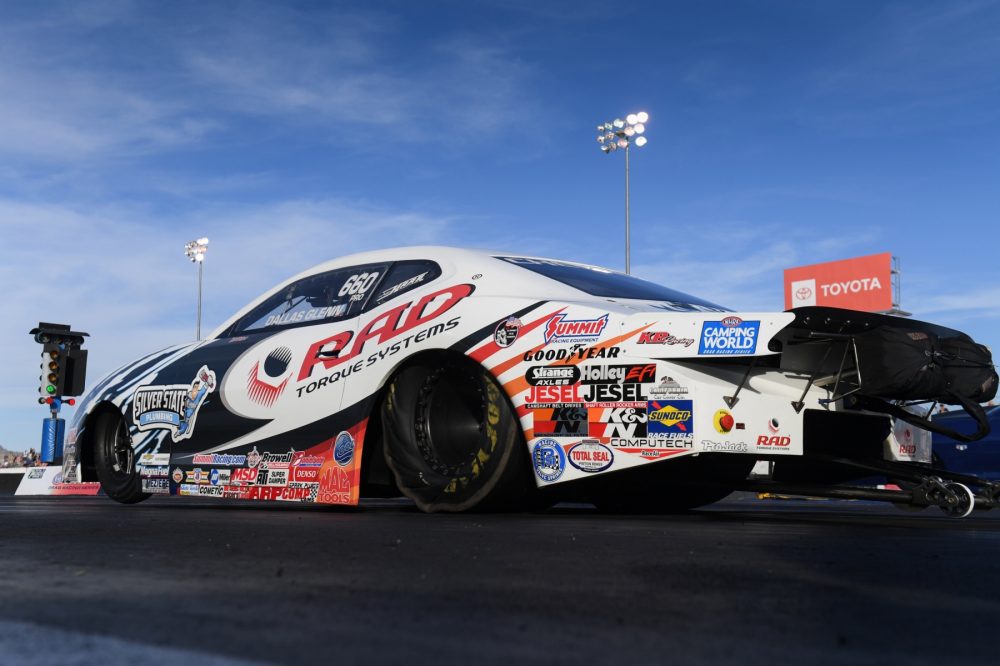
Is there something else that can be done – whether it’s from NHRA’s side or the team side – to continue attracting new, young drivers to Pro Stock?
COUGHLIN: I think it would be nice if we had some help from NHRA to find some sponsorship dollars. I think if we had some help from NHRA – and they do help us with statistics to share with people who would become potential sponsors – but it would be neat if they’d share a little bit I guess, but I don’t really know what more can be done.
You can outreach to other motorsports or to other classes. You could look around in Comp and see the younger crowd racing and go to whoever’s sponsoring them and say, “Look, for this much more you could run a Pro Stock car and be exposed to this many people on a weekend.” It is tough, but it’s a really good question.
KORETSKY: It’s all about the return on the investment for the teams and the drivers and the sponsors. We’re just constantly getting shafted by the TV time. The sponsors need the TV exposure. [The TV broadcast] caters to Top Fuel and Funny Car. I get it, people want to see the flames and the blowups, but there’s a lot of diehard people out there that want to watch Pro Stock and Pro Stock Motorcycle and even Pro Mod. But [NHRA] doesn’t really care about it.
It’s hard to get sponsors when you show them that we get 30 seconds of TV time. They don’t want to hear that. It’s tough, it really is. We’re fortunate with Lucas Oil on board as a big supporter. We support their product and we use their product with our company, so that helps out a lot, but they want to see the TV time. They need to see the TV time.
And we should be racing for more money. I don’t know where all the money goes. I know the last year or so the pandemic has been tough. I get it and everyone understands it, but they cut the purses like there’s no tomorrow. If they paid us a hundred thousand to win a weekend it probably still wouldn’t be enough, but to go out there and race for – I don’t even know what we’re racing for anymore, 10, 15, 20 grand – it’s kind of like a kick in the ass, like you guys aren’t worth really anything to us.
And that’s all my opinion, that’s how I feel. I feel like we need to get more love on the TV side and on the marketing side of it. We’re out here trying to generate sponsorship to do it too, just like Top Fuel.
GLENN: I think one of the things that would really help at least in the Pro Stock class – it’s gotten a lot better, especially in recent years – is the amount of attention that Pro Stock is given. I know everyone loves the fuel cars – they blow up, it’s excitement. But maybe if there were more classes on the technical aspects of Pro Stock to try to help the younger crowd understand exactly how technical and how finicky and touchy and amazing these cars really are.
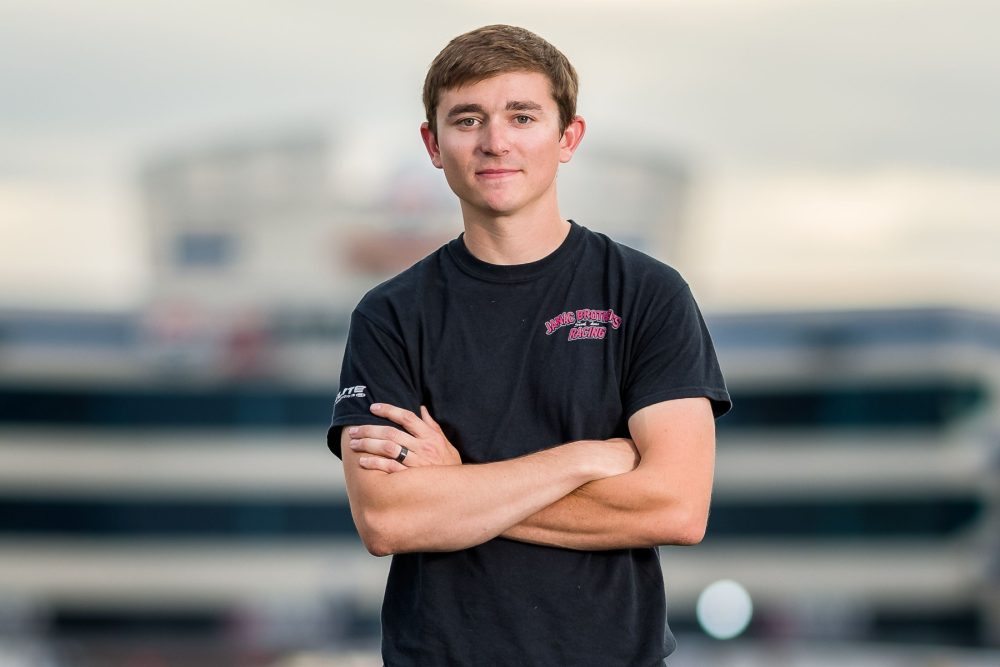
Aaron Stanfield
I don’t know if there would ever be some way to get other manufacturers or maybe some different body styles in. I know that’s one of the common complaints that I see online, that everyone hates that it’s just a bunch of Camaros out here. But you really gotta hand it to GM for supporting this class as well as they have. The reason that there’s all Chevys in here is just because of the amount of support and availability of parts that there is. It’s not that a Dodge can’t run with us. I believe that if somebody put the amount of money and time and effort into a Dodge or Ford, it could run just as good as the Chevys. I know that may not be a common belief, but I believe it can.
STANFIELD: I think Pro Stock is as healthy as it’s been in a long time. I really think the main thing is being able to pay the entertainers a little bit better, if that makes sense. I heard somebody say the other day that we’re one of the only sports that pay to entertain the crowd. I think payout would be a good talking point.
But as far as everything else goes, I think it’s in a good place as far as attracting new, young drivers. The opportunities are there. If you have connections with KB and Elite and the McGahas, you can hop into a competitive car. It’s up to you to see what you can do with it.
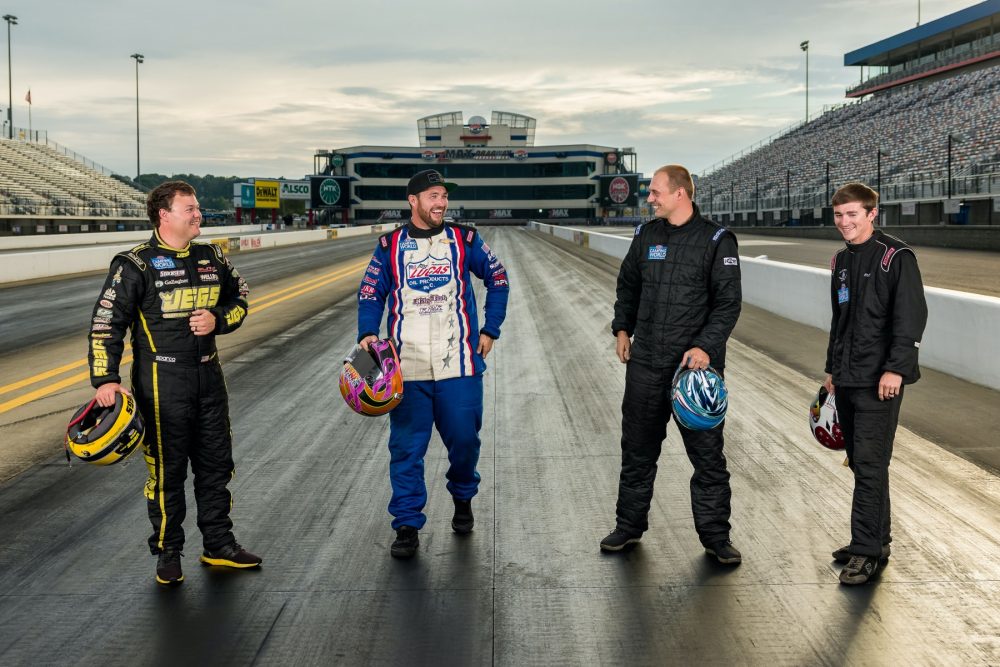
We’ve seen numerous “greats” in Pro Stock retire or step away in recent years, like Jason Line and Jeg Coughlin Jr. Do you aspire to someday be one of this generation’s “greats” in another 10-20 years?
COUGHLIN: Absolutely. Every time you go to the dragstrip you’re wanting to win and set the world on fire. That’s definitely one of my goals, to become a world champion and continue to learn the class and make the best runs I possibly can. But most importantly, just continue to learn the class, learn the driving and never stop.
KORETSKY: Yeah, a hundred percent. I’m trying to leave this sport with a reputation that everyone’s going to remember forever so eventually one day my kids can look up and see that their dad or their uncle was one of the best. I feel we have the team. I feel like I can do it. Just a little bit of time and a little bit of experience and we can take out the top dogs any time we line up against them.
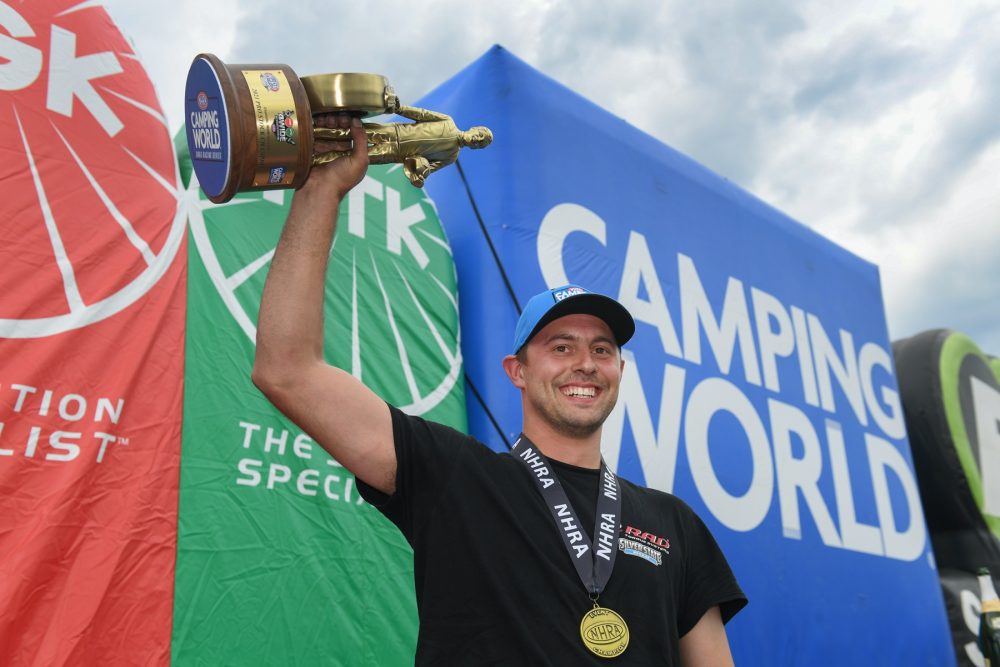 GLENN: Yeah, absolutely. If I can be blessed and lucky enough to continue racing that long, I would hope to be able to get somewhere in the realm of as many race wins or championships as they have. I try to look at everything as one race at a time. You look at Greg with 98 wins. It’s like, jeez, if I ever wanted to try to catch him, I’m going to have to win like 10 races a year for nine years. When you think about it that way, it’s crazy. He’s been doing it forever it seems like.
GLENN: Yeah, absolutely. If I can be blessed and lucky enough to continue racing that long, I would hope to be able to get somewhere in the realm of as many race wins or championships as they have. I try to look at everything as one race at a time. You look at Greg with 98 wins. It’s like, jeez, if I ever wanted to try to catch him, I’m going to have to win like 10 races a year for nine years. When you think about it that way, it’s crazy. He’s been doing it forever it seems like.
All I want to do is go up and have fun and try to do the best that I can every single run. If somebody wants to call me the greatest in 10 years or whatever, if I’ve done my job, that’s fine. There’s so many great drivers in this class that I don’t think you could ever really pinpoint one specific driver and call them the absolute greatest because each and every driver brings something else to the table that another one doesn’t. Especially with how amazing everybody is in this class, every round is usually tough. Just to be in the group of drivers who are good is just an honor, in my opinion.
STANFIELD: For sure, I would definitely want to be one of the greats. Anything I drive, I don’t always accomplish it, but I want to strive to be the best – the best I can be. I think I have a long way to go, but I plan to try to continue to grow. I hope I get to race Pro Stock as long as possible, but any opportunity that I can get to race at a high level, that’s what I want to do.
Photographs by Rick Belden and NHRA/National Dragster
